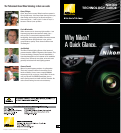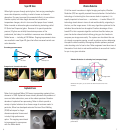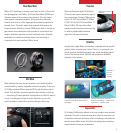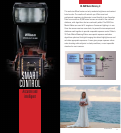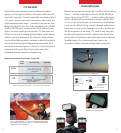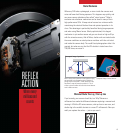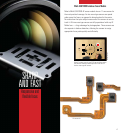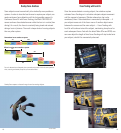
15
When every
millisecond
counts
REFLEX
ACTION
Shutter Mechanism
When any SLR takes a photograph, a mirror inside the camera must
raise and lower itself during exposure. This happens very quickly, and
can cause camera vibrations often called “mirror bounce.” Nikon’s
exclusive mirror balancer mechanism can be found in many of their
high-performance SLRs. It keeps mirror bounce to a minimum while
maintaining the shortest blackout time and quietest operation in its
class. This advantage is particularly beneficial during long exposures
and when using Macro lenses. Utterly sophisticated, this elegant
mechanism is yet another reason why you can shoot as high as 8 fps
with the utmost accuracy. And at Nikon, shutter units are tested under
the same conditions as actual pictures are taken: with the unit intact
and inside the camera body. The world’s best photographers take it for
granted, but when we say that the D2x shutter is tested more than
150,000 times, we mean it.
Nikon’s unique mirror balancer can be explained using
the pendulum in the illustration above. Pendulum P
swings down to Pendulum P’. When these two meet,
Pendulum P stops still exactly at position A’. This is
similar to how the reflex mirror and the mirror balancer
work in Nikon cameras.
Minimized Shutter Time Lag / Start-up time
If you’re ready, your camera should be, too. Why? Because a
millisecond can make the difference between capturing a moment and
missing it. With the D2 series cameras, start-up time is near zero, and
shutter lag is the world’s shortest at a mere 37 milliseconds. Now you
really can capture the action — just as you saw it.
Conceptual image of pendulum
Conceptual image of mirror balancer.
milliseconds



